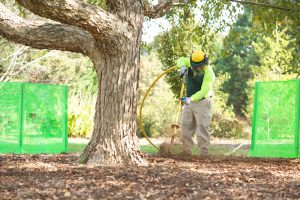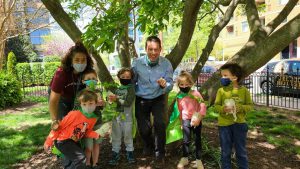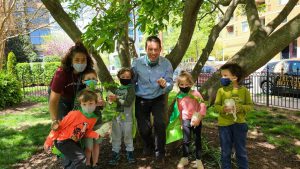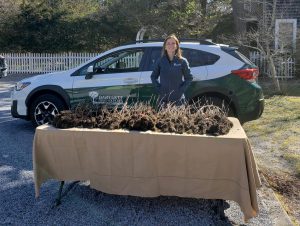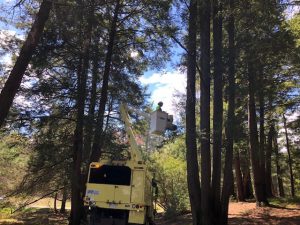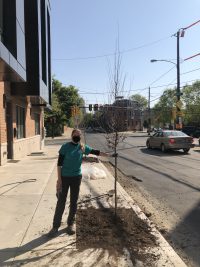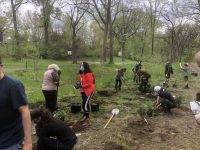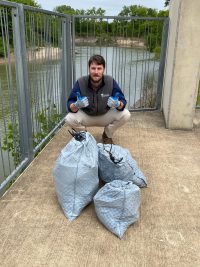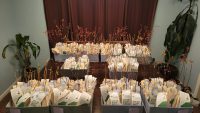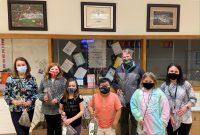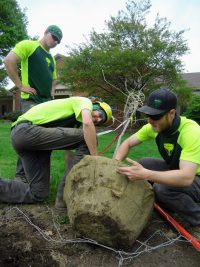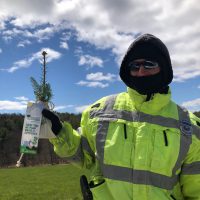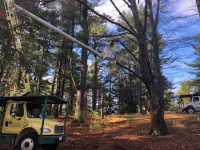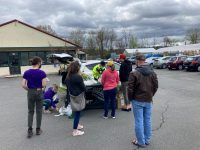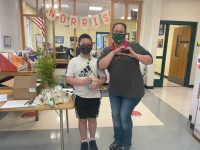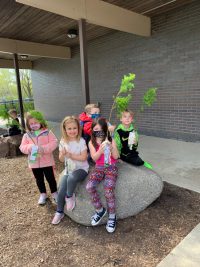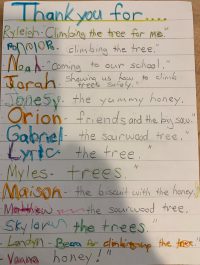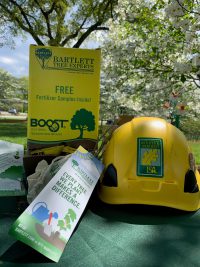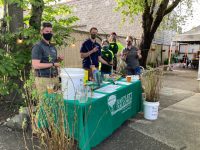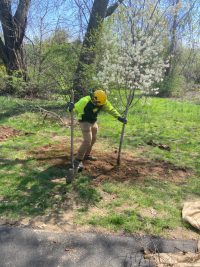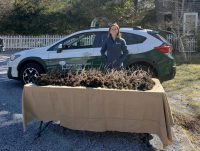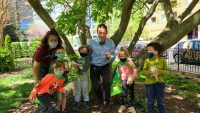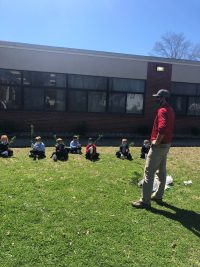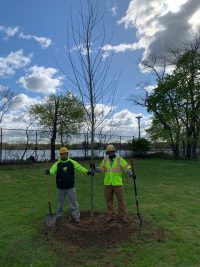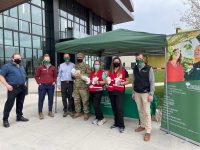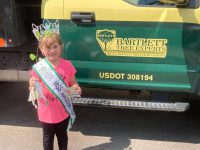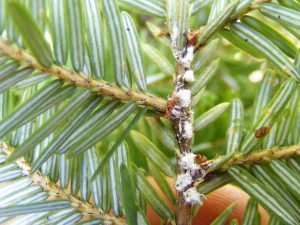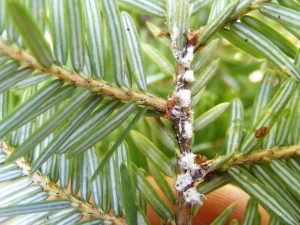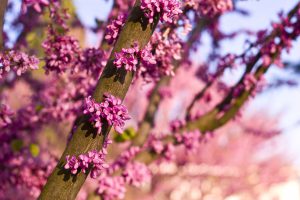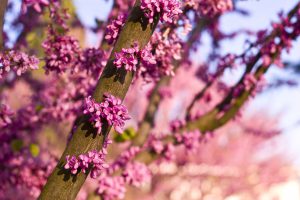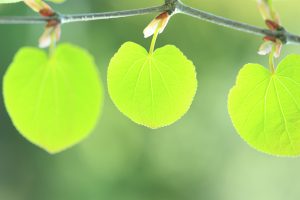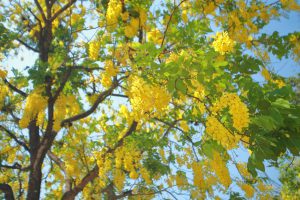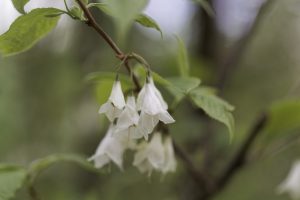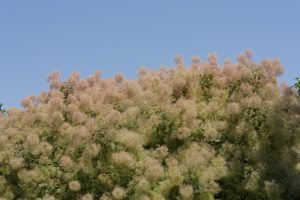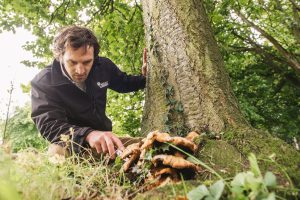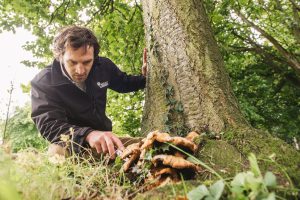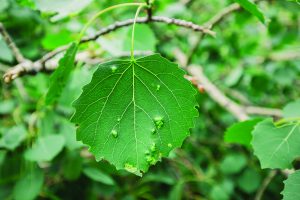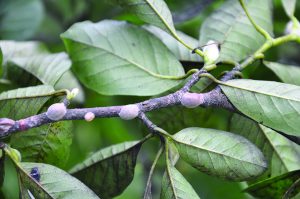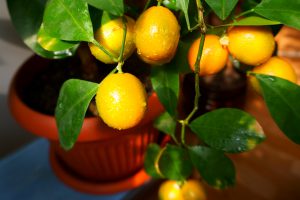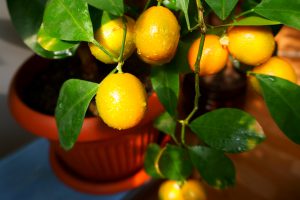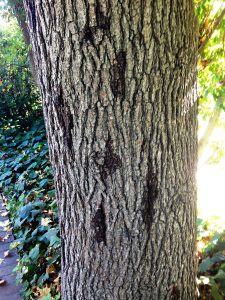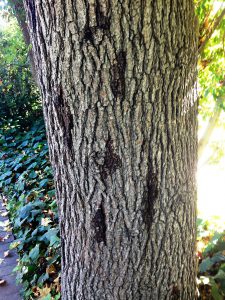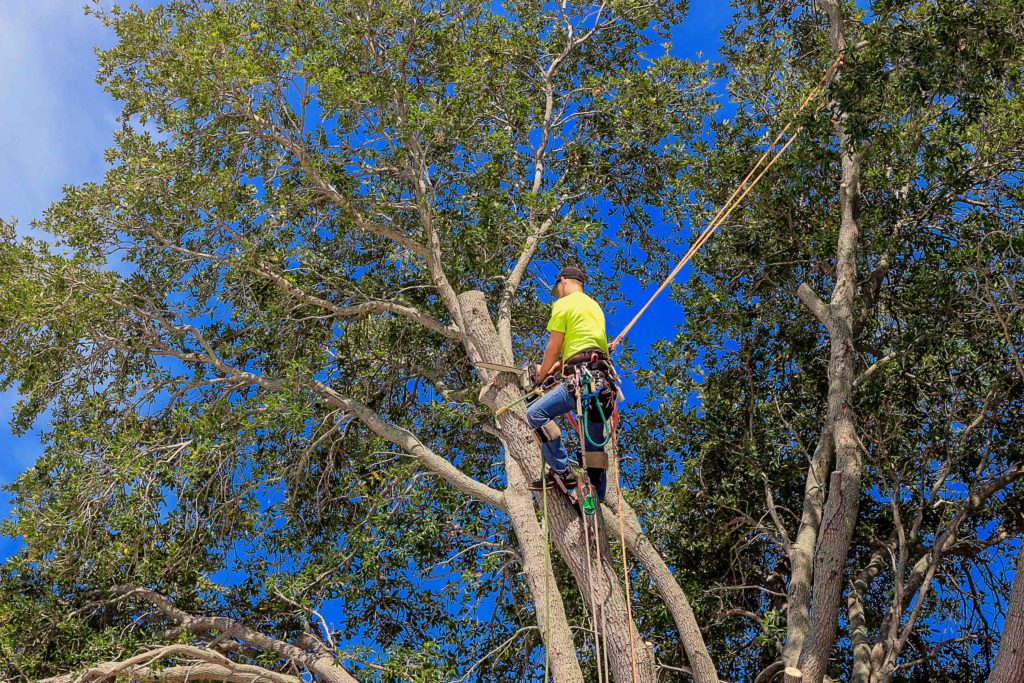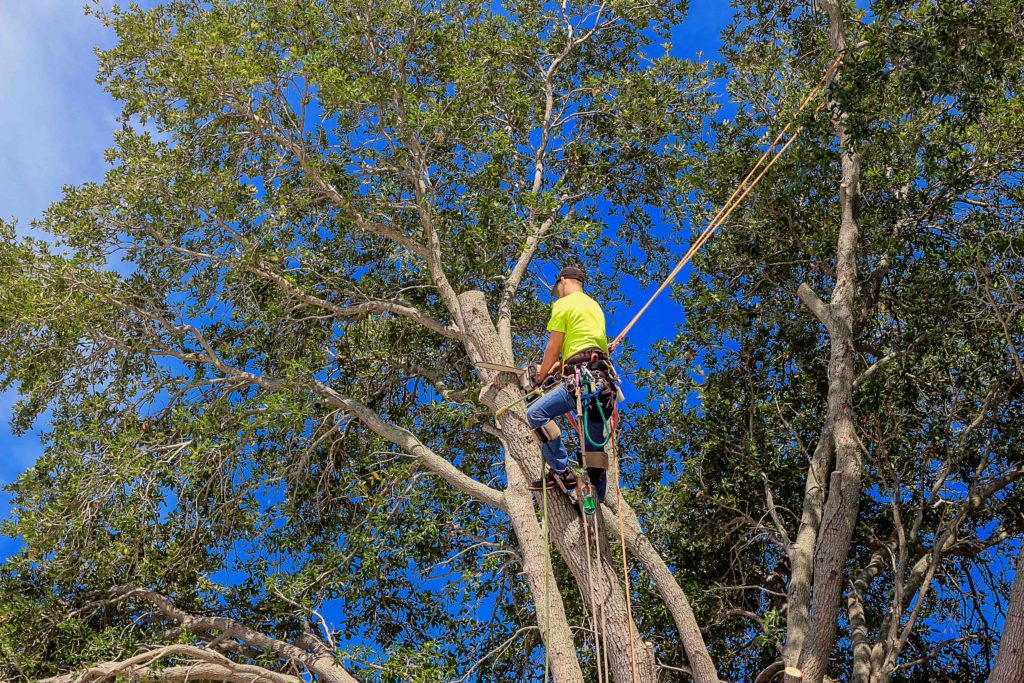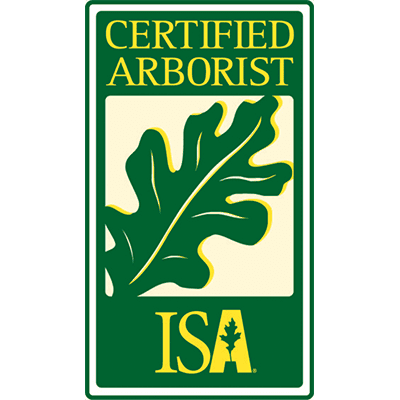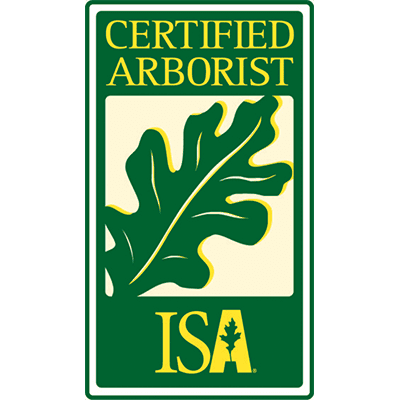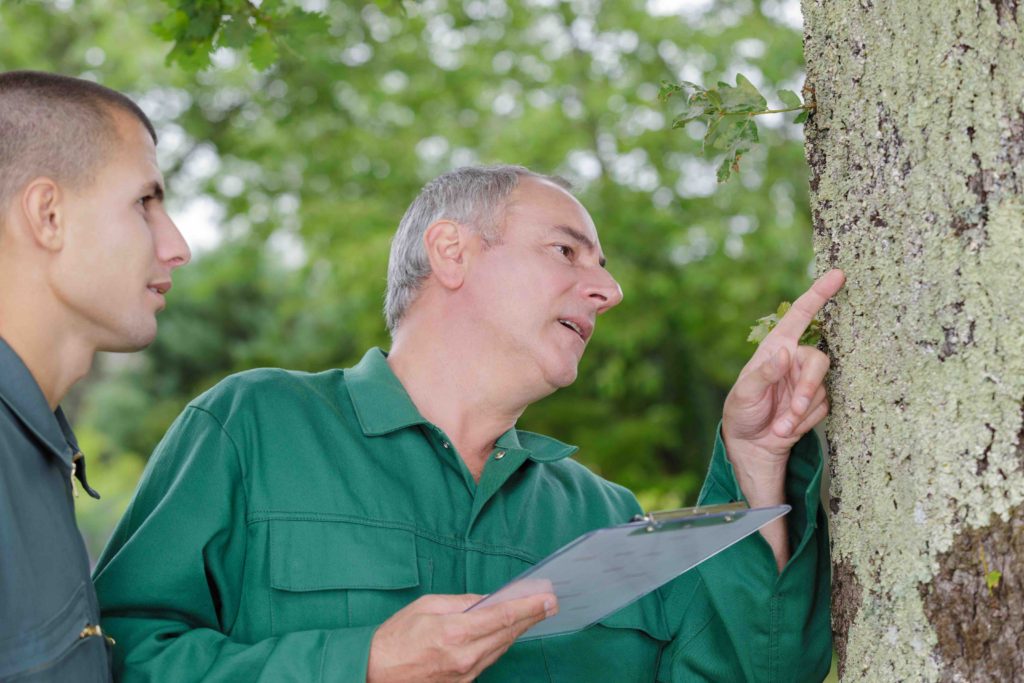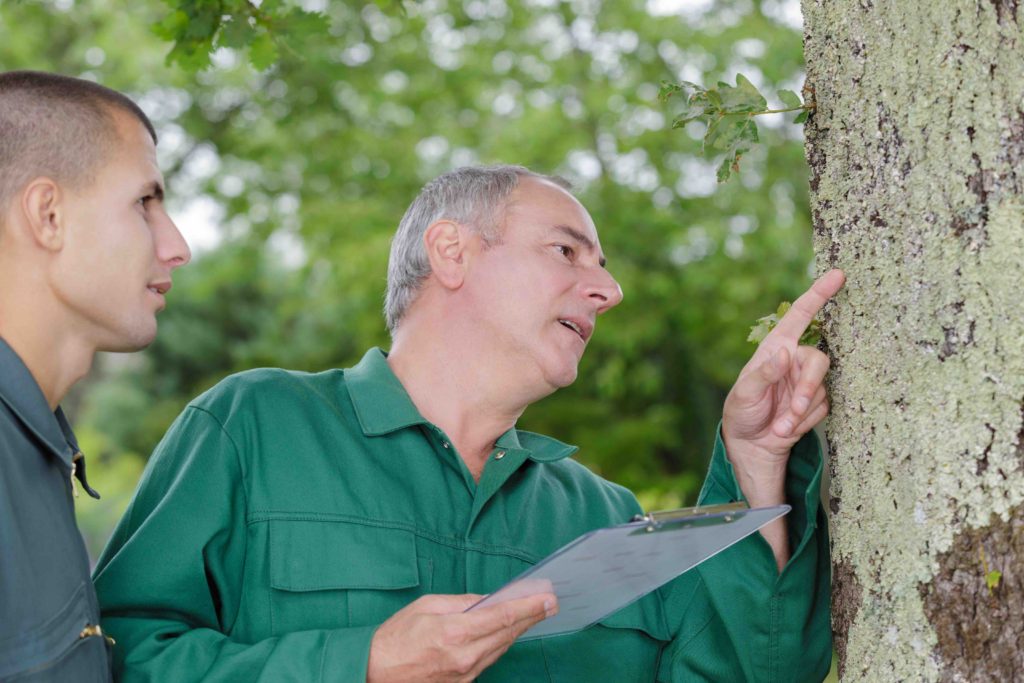It can be hard to grow bulbs, perennials, annuals, or shrubs under the shade of large trees. All plants need light to grow and only a few thrive in low light conditions. However, for the right species, mature shade trees provide an excellent source of shade or filtered sunlight.
The first step is to select plant species that are adapted to your area and are tolerant of low light.
The next step is to plant in an area that already has a dense tree root system. Tree roots tend to be concentrated near the trunk and within the drip line. When digging, avoid cutting tree roots, especially those beneath the canopy. Damage to roots is a leading cause of tree mortality.
Using soil to create a bed for shade loving plants can be equally damaging to the existing plant’s root system. Fill soil reduces oxygen levels in the root zone and can change drainage patterns. This may lead to root mortality and stem and root disease for the plants already there. With this in mind, proper soil preparation is key to protecting trees when planting a shade garden.
Preparing the Planting Bed
A Bartlett Arborist can loosen soil using a high-pressure air excavation tool. Air is propelled at supersonic speeds to loosen soil without damaging tree roots. Organic matter and fertilizer are mixed into the soil at the same time to encourage rapid root growth. This is a gentle alternative to hand digging or rototilling. Preparing the soil in this way enables landscapers or homeowners to easily place their favorite shade loving plants in the planting bed, often with no tools at all since the soils is loose and ready for planting.
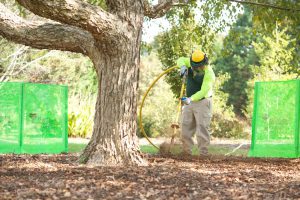
An arborist loosens the soil under a mature tree to create a planting bed.
The roots of the newly planted material quickly and easily grow in the loose, rich soil allowing for rapid establishment. All you need to add is water and mulch. Mulch helps soil retain moisture and provides nutrients as it decomposes. The result is a great looking and fast-growing shade garden with no negative impact on the overstory tree(s).
Tips for Maintaining Planting Beds
Be sure to keep soil away from tree trunks – there should be a visible flare where the roots enter the ground. Additionally, when irrigating the understory plants, don’t direct water at the trunks of trees. This can cause disease problems.
Since there are now multiple plants growing in the same rooting area, the new plantings and the established tree(s) compete for water and fertilizer so volumes may need to be adjusted. Monitor conditions carefully until the new plants are established.
Plants that Tolerate Shade
Fullmoon maple
Striped maple
Three-flower maple
Downy serviceberry
Allegheny serviceberry
Apple serviceberry
American hornbeam
Eastern redbud
Texas redbud
Fringetree
Flowering dogwood
Kousa dogwood
Cornelian cherry dogwood
Japanese witchhazel
Chinese witchhazel
Common witchhazel
American holly
Sweetbay magnolia
American hophornbeam
Bottlebrush buckeye
Azalea
Sweetshrub
Plum yew
Summersweet clethera
Drooping leucothoe
Spicebush
Highbush blueberry
Mapleleaf viburnum
Koreanspice viburnum
Dusty zenobia
Columbine
False spriera
Bellflower
Bleeding heart
Barrenwort
Hakone grass
Hellebore
Coral bell
Hosta/Plantain lily
Cardinal flower
Flowering fern
Peony
Lungwort
Foamflower
Violet
The post Made in the Shade: Planting Under Trees first appeared on Tree Topics.
Did you miss our previous article…
https://www.treeservicebakersfield.co/?p=228
